Scuba Diving!!
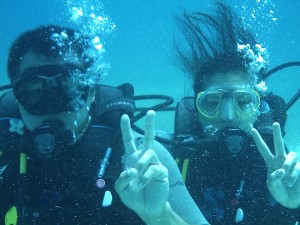
Irene and I are now Scuba certified!
Ever since high school, I’ve always wanted to go diving, but hadn’t had the chance. I grew up in Middle Georgia, at best 3 hours away from the nearest coast, not to mention with murky waters. No diving here. Afterwards, I went to college in the plains of the Midwest, even further away from any ocean, so no place to dive there either. Then afterwards, I returned to Georgia for pre-med where murky waters reigns king. But ever since I set foot in St. Maarten for medical school, I finally got the location right, but now the issue was finding the time outside of studying and preparing for exams. But with the 2-week summer break and all my classes passed, I finally had the time to focus on taking the PADI Open Water Diver Certification course, and with my favorite person in the world, Irene.
The PADI Open Water Diver Certification course is the most basic level certification for any starting diver. It is a rigorous 3-day course that includes reading a 250-page textbook about the theory of diving (pressure, currents, safety scenarios, how to calculate body nitrogen levels, etc.), watching a 2.5 hr DVD, taking 4 quizzes, a 50-question final exam, 5 confined water dives, and 4 open water dives. With the certification, Irene and I have the privilege to rent scuba gear and dive independently without an instructor anywhere in the world. We can also descend to a maximum depth of 60 feet and my certification is lifelong and internationally recognized. It opens up a whole new door of opportunities and is a great investment.
There are many dive shops around St. Martin where we could have taken the course to get certified but like many AUC students, I chose Octopus Diving because they are a smaller team (a cute husband and wife duo) and they have small, intimate courses. It’s funny how this is the same reason why I chose to come to AUC. Octopus Diving take no more than 6 people at a time on their boats, so they give each student more attention. They also gave us a great AUC student discount. They are located in Grand Case on the French side and they are really hospitable and fantastic.
Before starting the first day of the course, Irene and I went to the lecture halls at AUC and studied the diving textbook. “Studying on a break?” people would ask. “Yeah… but at least it’s not biochemistry!” I would reply.
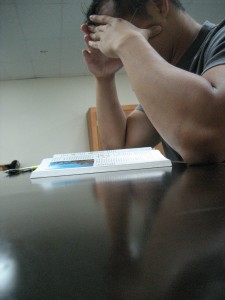
On the first day of the course at 8am, Irene and I drove 20 minutes into the sleepy town of Grand Case on the French side. We had completed all the mini-review questions in the textbook and were ready to take the exam. For the past few days, we had studied together, quizzed each other, and answered each others questions. We were fortunate that we were the only two people in the class: just Irene and me, and Sally, the instructor and co-owner of Octopus Diving. We went over the key points for each of the five chapters, taking a 10-question quiz between each chapter. After we felt we were ready, we took a deep breath and attempted the 50-question final exam that would complete our academic portion of the course. We both passed with a 44/50, albeit each of us missing completely different questions.
After taking the quiz and learning how to set up all the scuba gear countless times, it was time for us to get into the water to learn new skills. As Octopus Diving didn’t have a swimming pool to conduct our 5 confined dives, we headed over into the bay (even better), until 12 feet of water covered our heads. It was an interesting experience my first time breathing underwater. It just didn’t seem natural, probably because it wasn’t. Nevertheless, I felt a new-found freedom, free from the weights of gravity, free from the grounded life above the surface, and free from our own body’s physical limitations. Now there is a whole new world to discover, an underwater world.
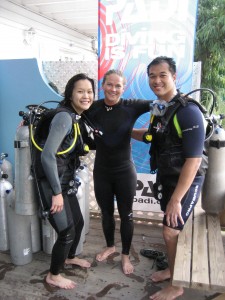
During our five confined dives, we learned skills such as taking off a mask underwater and blowing the water out of the mask to put it back on. We learned how to share our air supply with our buddy in case he or she runs out of air. We learned what it feels like when our tanks are depleted of air, and we learned how to “drink” the air bubbles through a regulator (mouthpiece) that is defective and constantly releasing air. We learned how to take off our buoyancy control device jackets and our weights underwater and how to put them back on. Reading about these skills in the textbook and actually doing it underwater was completely different. In the water, I felt like a fish out of the water. As I was not used to it, there were several times where I had panicked, being so afraid that I would breathe in salt water, or get salt water in my eyes, both of which did indeed happen. Nevertheless, I survived, and Sally was there to make sure I get through OK. By the end of the first day, I was already feeling doubts about the whole diving dream. But at least I was assured that Irene had a lot of fun, and I was excited for her.
Early morning on the second day, we carried our scuba gear and headed over to the boat. We were about to do our first open water dive, 30 feet underwater, at a site called Creole Rock. Shaken up from the previous day, I told myself to relax. I’ve got air… everything will be OK. After a James Bond-style back flip over the side of the boat, we were in the water. I slowly and steadily descended down, equalizing the pressure in my ears, and soon, I disappeared from the world above. I now found myself in a completely different landscape, with its own meadows, hills, and valleys. The water was teeming with life. For the first time, I swam along with an enormous school of fish. I was quite amazed at how much we blended in as divers. Fish swim by without perceiving any threat from us. A sea turtle swam right within an arms reach from my face. We glided among coral and seaweed. We saw octopus, lobsters, and moray eels. We learned some more skills at 30 feet underwater, such as controlled emergency ascent in case of a low-air emergency and how to better control buoyancy with our lungs. We reviewed some of the mask-off techniques from the day before, and this time I no longer panicked. I knew exactly what to do and how it would feel. Because of this, my confidence in diving returned and my doubts dissipated. I was excited more than ever about the third and fourth dives required for certification.
Then on the third and last day of the course, we knew what to do and were confident going into the water. Irene bought an underwater camera to take pictures and videos with. For these dives, we knew we were going to really enjoy it. Like last time, we dived at Creole Rock and Turtle Reef. We learned a few more new skills, like navigating through the waters using a compass.
Scuba diving was amazing, especially with St. Maarten’s hard-to-beat clear blue waters and outstanding marine life. Exploring the underwater world up-close and personal was definitely one of the highlights of our short 2-week summer break. St. Maarten is the perfect place to learn to scuba dive and it’s definitely something worth doing before leaving the island. I’ve just put my name on the emailing list for the AUC Dive Club. I look forward to meeting other divers at AUC and go on more underwater adventures in the future!

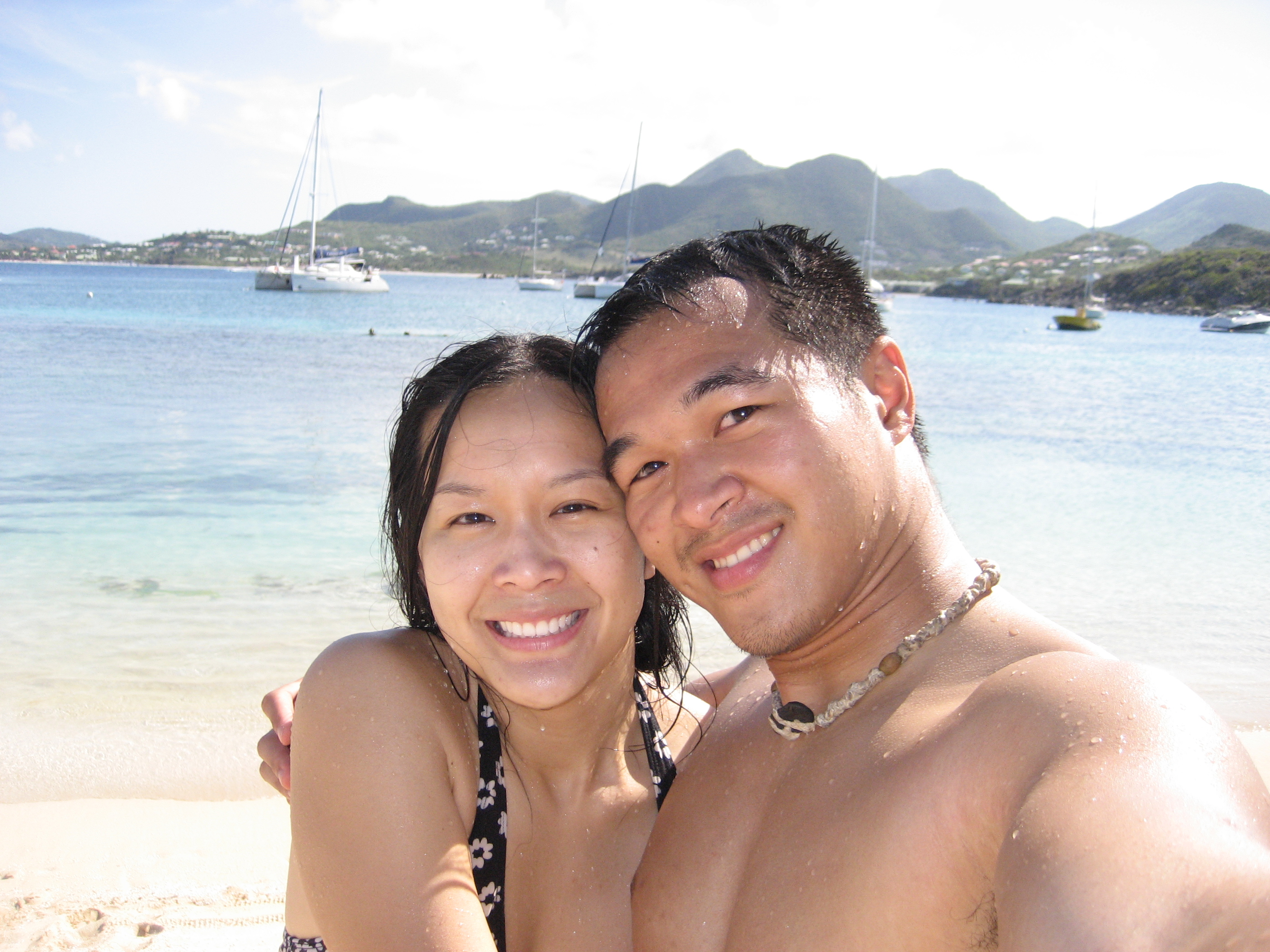
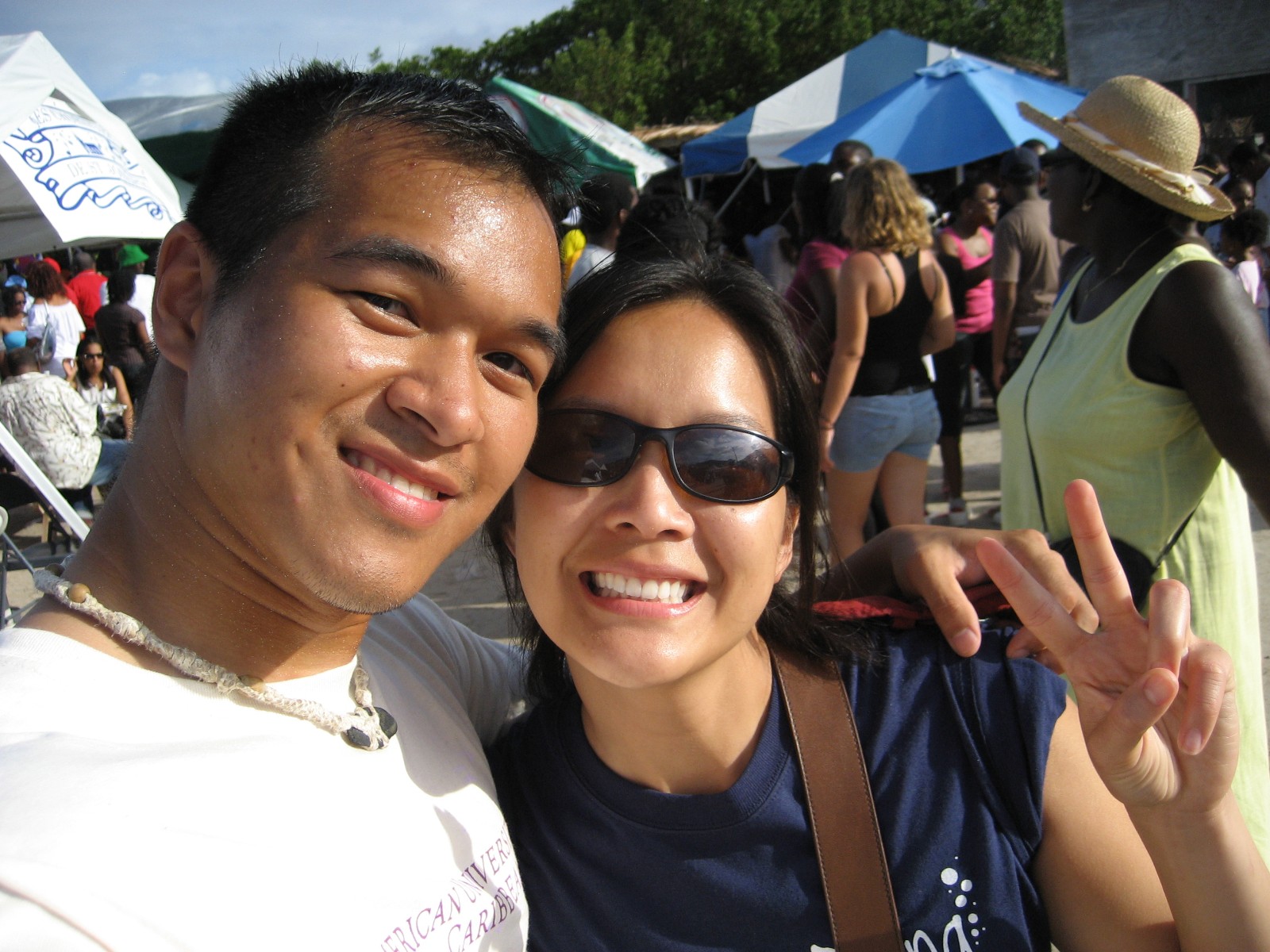








both of u are amazing.. you hav done what I overwhelming longing to…cool thing….